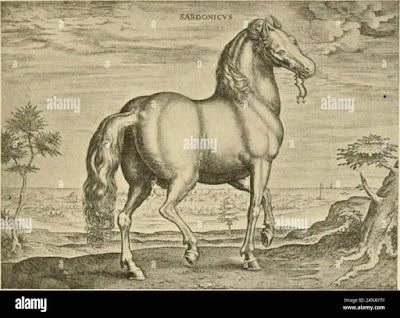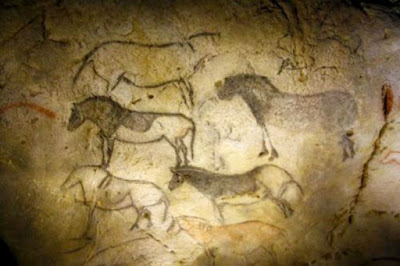Mysterious neighing on the horizon
The 3 lost horses of Europe
When we talk about equines, it is inevitable to think of horses going into battle with their masters in ancient Europe and in different war scenarios throughout time, Just as we cannot help but imagine large herds of zebra running on the great African plains, wild donkeys roaming free in Asia, or even, bighorn horses running through the American West.
But, you will be surprised to know that until a long time ago, not only could you see wild horses running in those places, but there were also 3 possible mysterious horses, running free and roaming the European lands, accompany me to analyze these cases, let's dive deeper.
The enigmatic European Khur
The European khur, with the proposed scientific name Equus hydruntinus, was a possible species of the equine family and a possible close relative of onagers which was found in Pleistocene sites throughout Europe, the Middle East, Asia possibly North Africa and which became extinct possibly during the Iron Age.
Although similar in appearance to the Asian wild ass, the European khur had a shorter and wider snout, a characteristic that some scientists associate with better adaptation to the cold, it is unknown what color they had, although cave paintings could suggest a light coloration similar to the Asian donkey.
This was described for the first time in 1904, but its classification through morphological analysis of the remains has always been problematic, due to the few and fragmented remains, that have characters that are too similar to those of current species, and even several samples turned out to be from horses or donkeys.
Very possibly this extended through the Iberian and Italian peninsulas, the British Isles, France, the Germanic and Slavic regions, Syria, Jordan, Azerbaijan, Kazakhstan, Iran, and possibly Libya and Tunisia, however, analysis of the mitochondrial DNA of many of these remains has reduced their distribution to the European part and the Anatolian peninsula and possibly these experienced several bottlenecks, yet it appears that he lived until the European Iron age, coming to coexist with the first humans who populated the region.
As a bonus: this species is considered a catch-all taxon, a term used to define taxa that were defined primarily to classify organisms that didn't fit anywhere else.
The cause of its extinction is unknown, but environmental changes and human hunting may have played a role.
The mysterious Celtic pony.
The Celtic pony, proposed name equus celticus, is a very ancient type of pony or small equine, now extinct, that lived in the wild in prehistoric times in Western European regions, then it was probably domesticated by Celtic peoples.
The Celtic pony was characterized by a thick and robust conformation, and by a head profile that was concave at the top and convex at the bottom, its height at the withers is certainly small, around 1.30 m, not exceeding this average, according to a genetic study carried out on populations of Spanish ponies of the Celtic type, the black coat color is the majority, so perhaps this was the color of these animals.
[Illustrative image, it was the only thing I found]
Living wild in prehistoric times, these ponies were probably domesticated by Celtic peoples, but in the absence of written evidence, it is impossible to know whether the Celts practiced their breeding, today the term "Celtic pony" is currently used as an umbrella word for a series of European horse breeds, which can be divided into two branches: the northern Celtic ponies and the British Isles, and those from the south of France and the Iberian Peninsula.
Some remains have been discovered, possibly of this animal, the most notable being a series of 1.10 meter horses along with a carriage and larger horses, so it is theorized that if these animals existed they were especially reserved for the warrior aristocracy, this type of small horse probably disappeared in favor of more thoroughbred and larger horses, with the remaining horse populations considered descendants of the Celtic pony being wild or geographically isolated ponies, although it is not known exactly if these were tarpans, common horses or a different species.
El cebro ibérico, el enigma zoológico de Europa
The zebra was an equid that lived in the Iberian Peninsula at least until the 16th century. It was 1.30 meters tall and weighed 300 kilograms, depending on whether it was faster than a domestic horse, cream or reddish-brown in color, although more often uniform gray, it seems to have striped fur (striped like zebras) especially in the upper part of the legs and possibly in the withers and neck. These are the data that we can extract from the numerous texts that refer to him.
In reality, the current zebra man is due to this animal, created in the 15th century when Portuguese explorers arrived on the coast of what is now South Africa and found herds of striped horses that reminded them of the Iberian horses, but smaller.
Possibly its expansion area approximately in the 12th century that would go from the entire Western Peninsula to Extremadura and to the East of the Castilian Plateau and through the interior lands of Andalusia and Mauricia, however there are indications that its expansion was greater through other indications such as the rock caves of the Ekain Cave (Deva, Guipúzcoa).
Their decline was curiously accompanied by the expansion of the Christian kingdoms towards the South with the Reconquista, especially between the 12th and 14th centuries... and they were hunted in the raids of hunting, (exclusive to the nobility) they were also hunted by the Christian settlers for their meat and skin and because the stallions often stole the mares or mixed with them, so in the 15th century they were only present in the plains of Albacete and it seems that they became extinct at the beginning of the 16th century, although there are alleged sub-fossils, even so, their identity has not been clarified.
As a curious fact, there is an alleged breed of Spanish horses that would descend from these, but that will be the subject of another post, It is very beautiful and intriguing to analyze these mysterious horses that once ran in the valleys of Europe and ended up going until eternity.
[Reading links]
https://eu.m.wikipedia.org/wiki/Equus_hydruntinus
https://fr.m.wikipedia.org/wiki/Poney_celte
http://cronicasdefauna.blogspot.com/2020/10/el-misterio-del-zebro-estado-de-la.html?m=1









Comments
Post a Comment